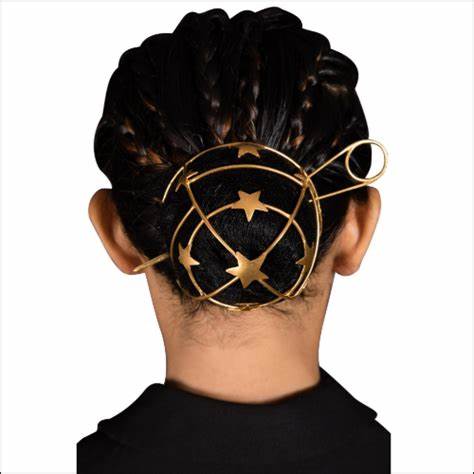
Romans valued their appearance greatly, evident in their lavishly adorned homes, monuments, and daily grooming rituals. Female Roman coiffures often included hair jewelry such as rings and strings. Women also commonly wore high wigs or intricate curls.
Roman Haircuts for Men
The Caesar haircut, named after Julius Caesar, involves styling the hair forward into an undercut style, creating a short vertical fringe. This hairstyle is beneficial for individuals with thinning or receding hairlines, as it helps to conceal them. The Romans considered their appearance crucial in reflecting their status and wealth, as evident in their extravagant homes and grand monuments. Women’s hairstyles indicated their social class, with more elaborate styles featuring curls and braids being fashionable among aristocrats during the Flavian and Antonine periods. However, later on, both men and women embraced more straightforward hairstyles.
Caesar Haircut
The Caesar haircut is a bold and stylish option for men. Unique elements like bleached strands or a taper fade can be incorporated to enhance the style further. This haircut works well with beards. When getting this haircut, ask the barber to use scissors to create a blunt fringe from half to two inches of top hair, and then use a trimmer for a low skin fade on both sides of the head. The Caesar hairstyle is perfect for young gentlemen looking for a fresh look or older men aiming for something different. This haircut may also help to camouflage a receding hairline.
Tutu Haircut
hair was highly valued by Roman women, seen as an essential element of beauty and self-expression, reflecting their social status, wealth, and personal taste. Hairstyles varied based on geographical location, period, gender, and profession. In early Roman history, individuals typically styled their hair. However, the introduction of professional barbering in Rome, led by Publius Titinius Menas, resulted in the barbering industry flourishing during Imperial rule. Tutus, a beehive, helmet, or hair bouquet, were popular Roman hairstyles among upper-class women. These hairstyles resembled buns but were more intricate and elegant.
Tonsure Haircut
Vox’s Phil Edwards delves into the history and significance of tonsure haircuts in a thought-provoking video essay, joined by Daniel McCarthy, an expert in medieval Christian studies. Tonsure haircuts were traditionally worn by religious men, symbolizing their devotion and humility. This involved shaving off all hair except for a small circular area on the crown of the head. While tonsures were once part of Catholic initiation rites, they are now observed ceremonially only by specific religious orders with papal permission. Tonsures have also become a symbol for Buddhist monks and other members of religious communities, representing their commitment to renouncing worldly fashion and status.
Ivy League Haircut
The Ivy League haircut, or the Princeton cut or Harvard clip, is a timeless style that combines formality and simplicity effortlessly. This short haircut features tapered sides and back, with medium to long top layers that can be styled towards either side or left free to cover the widow’s peak areas. Adding texture to the hair using gel or pomade makes the Ivy League haircut more casual, making it suitable for men with naturally curly or wavy locks who want to showcase their hair’s natural texture. This look radiates relaxed professionalism in any setting.

